Tea is history, it is tradition, it is culture, it is philosophy and just a drink. The editors of the site "bestx.htgetrid.com/en/" will help you understand the issue of choosing tea.

Content
A bit of history
According to Chinese mythology, a person's acquaintance with tea occurred more than 2000 BC. According to other sources, the use of this drink as a medicine began in the 500s AD. We can only say with certainty that the homeland of the tea drinking tradition is China.
Until the first half of the 19th century, almost all tea in the world came from China.
The word “tea” itself came to the Russian language from China - a prepared and dried tea leaf in the northern Chinese dialect is pronounced “cha”, and the name of the drink brewed from this raw material sounds like “ch-a-i”. The same story is with the English word "Tea", it comes from the south of China, where the name of tea is pronounced "te".

The tea culture of China, over the long history of this great country, has experienced a decline and revival. Many traditions associated with the culture of drinking the drink were borrowed by different peoples from China and at the same time were completely forgotten in their homeland. For example, the Japanese tea ceremony was almost entirely borrowed from China, but is now positioned as a purely Japanese tradition.
Political turmoil in China, wars, revolutions and the attitude to their traditions as relics led to an almost complete loss of tea traditions and the loss of the leading position of the tea supplier in the world market. Since the 70s of the XX century, the tea culture of China has been experiencing a new stage of revival, but it will not be easy to regain leadership in the production of this product in the world market.
It would be wrong to talk about tea and not talk about England.
England is the ancestor of the European tradition of tea drinking.
Wishing to gain independence from China in the supply of tea, England promoted the spread of the tea tree in many of its colonies with a suitable climate for growing this plant. So the tea tree appeared in India, Sri Lanka, on the African continent in the Republic of Kenya. After gaining independence, many countries have a good income from the tea trade, thanks to well-established, in the colonial past, production processes and distribution channels.

The tea bush also grows in Russia in the Krasnodar Territory, as well as in Georgia and Azerbaijan. And this is also the result of the Russian Empire's attempt to have its own tea and not depend on the supply of raw materials from China. The tradition of tea drinking in Russia is less regulated and not so pretentious than in England (which is only the tradition of "five o'clock"), but in a sense it is even stronger. A feast with a samovar in the center of the table, with pastries, honey, jam, slowly during a simple conversation was not a sign of wealth or belonging to any class, but was taken for granted the end of a good working day.
Due to climatic conditions, the tea tree in the Russian Empire did not take root for a long time, and only at the end of the 19th and beginning of the 20th centuries was it possible to find a more or less adapted plant variety. Already in the USSR, in the post-war years, the work of breeders was crowned with success and varieties were obtained that are not only able to withstand frosts for a short time down to -25 ° C, but also provide raw materials for the production of a drink of very good quality. Growing a tea bush north of the Krasnodar Territory is possible, but not commercially viable.
What is tea
Previously, this was the name of a drink brewed or brewed from a previously prepared leaf of Chinese Camellia.

In the modern interpretation, this is the name for a drink brewed from any plant material. Typically, the name of the plant or products from which it is prepared is added to the name of such teas, for example, "Rooibos tea", "Chamomile tea", "Peppermint tea", "Fruit" or "Berry tea".
Before dwelling a little more on each type of drink, a few facts about tea in general should be noted.
- All types of tea are leaves, buds, shoots of the same plant - Chinese camellia. All differences lie in the time of collection, in which parts of the plant are collected and in the subsequent preparation of the collected material.
- Tea, in principle, cannot be too cheap, since there is a lot of manual labor in its production. Tea leaves, buds and shoots are mostly harvested by hand. Attempts to mechanize this process have led to a decrease in the quality of the finished product to such an extent that the mechanization of tea collection is practically not used.

A little about the production process
The production consists of several stages.
Collection of tea leaves. Different parts of the plant are harvested for different types of tea. It can be only leaf buds or young one or two leaves, young shoots with already blossoming leaves, mature third, fourth and fifth leaves on the shoot. Harvesting is carried out at different times of the year, at different times of the day, under different weather conditions. All this, ultimately, has a great impact on the taste and aroma of the final product.
After harvesting, drying occurs, in which the tea leaf loses some of its moisture and softens.
The next step is to repeatedly roll the tea leaf by hand or mechanically. As a result of twisting, juice is released.
Then the process of enzymatic oxidation begins, or, as it is also called in another way, fermentation. As a result, the starch contained in the juice decomposes into sugars, and chlorophyll into tannins. At the same time, catechins are converted to thioflavin and thearubigin, which are orange and brown. The degree of fermentation of the fox depends on the duration of the process.
For different types of tea, the degree of fermentation is different:
- For green, white, yellow - the oxidation state reaches from 3 to 12 percent;
- Black - almost completely oxidized - about 80 percent;
- Oolong has an oxidation state of 30-70 percent;
- Pu-erh initially has an oxidation state similar to that of green tea, but as it ages, the degree of fermentation increases. Roughly speaking, the fermentation process for puer is constant.
The last stage in the preparation of the tea leaf is forced drying at a certain temperature, which stops the fermentation process. After that, sorting, cutting, if necessary, and packaging of the finished product are performed.

What kind of tea happens
There are two varieties of tea tree
- Camellia sinensis var. sinensis - Chinese variety (Chinese, Japanese, Vietnamese, Georgian, etc. tea);
- Camellia sinensis var. assamica - Assamese variety (Indian, Ceylon, Kenyan tea).
All other tea trees are hybrids.
By origin, tea can be
- Chinese;
- Indian;
- Ceylon;
- Kenyan;
- Japanese;
- Korean;
- Vietnamese;
- Etc.
China currently holds about 25% of the world tea market. All existing species are produced in China, but the bulk of production is green.In addition, only China produces a yellow tea. It should be noted that green teas are mainly popular in Asian countries. All tea in China is made from the leaves of the Chinese tree variety. Many flavored teas are produced, but the Chinese themselves prefer the drink in its pure form, believing that additives with an extraneous taste and aroma only spoil the taste of the drink. Almost all of the product made in China is solid leaf.

India is the second largest supplier of tea to the world market. Production volumes significantly exceed domestic consumption. Basically, they supply the market with black varieties of cut or granulated teas, which are considered better than Chinese varieties in their taste characteristics, but inferior to them in aroma. The bulk of the raw material is derived from the Assamese tea bush. Blending is actively used to achieve the stability of the flavor and aroma of the variety. Green varieties of Indian tea are in little demand in the world and are sold mainly to neighboring countries.
Ceylon tea (produced by Sri Lanka) occupies about 10% of the world market. Only Assamese tea is cultivated. Very good quality black tea from alpine plantations. Green varieties are also produced.
Kenya in different years occupied the third-fourth place in terms of the volume of product supplies to the world market, despite the fact that the domestic consumption of this drink is small. Only black tea is produced, to a greater extent, of not very high quality, with a high degree of extract and a pungent taste, which is used later for blends and the release of packaged goods. There are high-altitude Kenyan varieties that are not inferior in quality to those of Ceylon and Indian.
In Japan and Korea, they produce their own green tea in small volumes, with their own traditions, secrets of technology, with a unique taste and aroma. But the product from these countries is quite expensive.
In many countries of the world, where climatic conditions permit, they grow and produce their own tea, but, as a rule, it goes only to the domestic market and is poorly represented outside these countries.

By the type of dried leaves, tea can be:
Baykhovy (loose):
- Leafy (large);
- Broken or broken (medium);
- Seeding or crumb (small).
Pressed:
- Brick;
- Tiled;
- Tableted.
Extracted (soluble).
Tea, as a finished product, is divided into the following types:
- Green;
- Black (in China it is called "red tea");
- Oolong;
- Puer;
- White or Silver;
- Yellow tea.
Now a little more detail about each species.
Green tea
The most popular type of tea in Asia (China, Japan, Korea, Vietnam). Its cost, to a greater extent, depends on what raw material it is made of - raw materials from young leaves are more expensive than from mature ones, simply because there are fewer of them, and the environment influences the quality of young leaves to a greater extent.
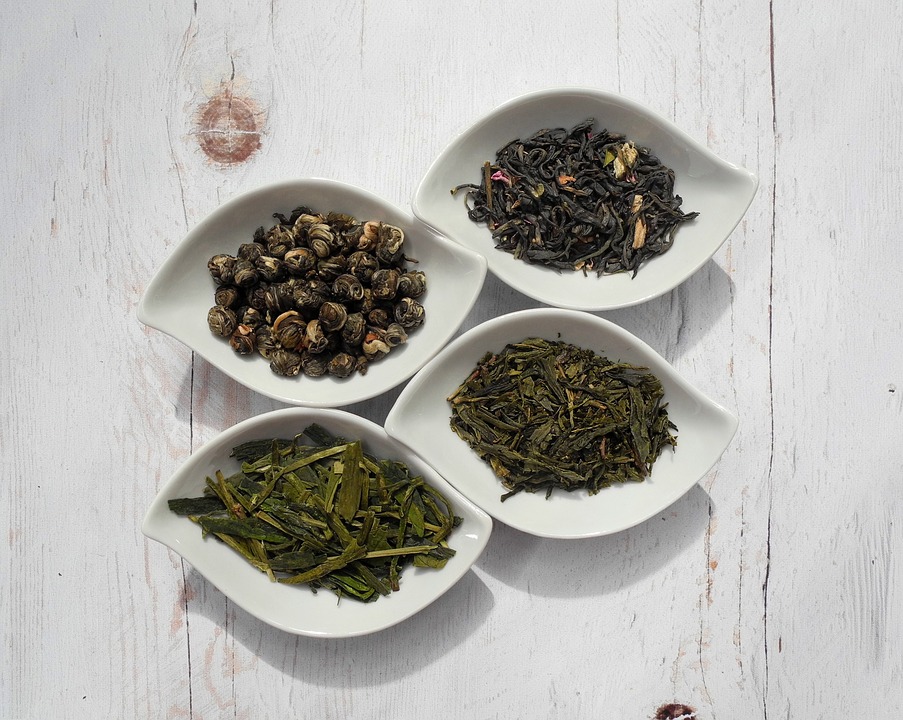
Typically, green tea is not cut. After collection, the leaf is preliminarily fixed with steam, fermentation may not be carried out or takes place within two days, after which the leaf is dried. When dry, it has a dark green color.
It is brewed at the rate of 1 teaspoon of raw materials per 1 cup at a water temperature of 65 ° C to 90 ° C. Infused from 30 seconds to 2-3 minutes. When brewed, the tea fox opens up. The infusion is straw-yellow or green in color with a pronounced herbal aroma. The taste is tart, may be slightly sweet with a slightly pronounced bitterness. Low aftertaste. After consumption, a pleasant sensation of freshness remains.
Has an invigorating effect. It is not recommended to add sugar or honey. A very interesting combination with mint, lemon, lime or orange. Can be diluted with milk. Brew 2-3 times in a short period of time. Can be consumed chilled (especially with lemon juice).
There is green tea that is practically ground into dust. It is mainly found in Japan and Korea. It dissolves very quickly in water, leaving a slight sediment, and is used as an additive in ice cream or dough to add flavor and green tea color to the final product.It is also used as instant tea, although it is not. Recently Green Latte drink is gaining popularity - green tea with milk and whipped milk foam.

A huge amount of research has been carried out to study the benefits of green tea for the human body.
It can be argued without a shadow of a doubt that green tea is one of the healthiest drinks.
Best Green Tea
Organic art matcha
Japanese green tea Matcha (Matcha) is traditionally used in the classic Japanese tea ceremony. The dried leaves are ground into powder to a practically soluble tea. Currently, it is actively used as a culinary additive.
The average price of Organic Art Matcha is 580 rubles per 50 gr.
Mlesna
High quality Ceylon large leaf green tea produced according to traditional Chinese technology. Has a tart taste. The infusion is transparent, yellowish-green in color.
The average price of Mlesna green tea is 672 rubles per 200 gr.
Maitre Assorted Whole China in bags
Despite the fact that this is a tea bag, thanks to it you can get an idea of all the possible variety of flavors and aromas of Chinese green tea from different provinces, produced with some differences in technology. Subsequently, you can give your preference to a particular variety and buy only it.
The average price of Maitre Assorted All China in bags is 97 rubles for 25 bags.

Green tea with additives
There are many varieties of green tea with additives, but we can recommend a few, the most interesting and harmonious.
In the first place, of course, green tea with jasmine. No less interesting is the mixture of green tea with lotus seeds. And for a snack, a little exotic, poorly represented on the Russian market - this is green tea with fried rice. The infusion of this tea is a little cloudy and nutritious, due to the starch contained in the rice, and will allow you not only to invigorate, but also slightly fortify. True, the feeling of hunger may remain.
Best Flavored Green Tea
Black Dragon with jasmine
The classic version of green tea with jasmine flowers. It is recommended to brew with water at a temperature not exceeding 85 ° C to preserve the jasmine aroma
The average price of Black Dragon with jasmine is 126 rubles per 100 gr.
Teapins Farmer`s tea B`Lao lotus
The tea industry in Vietnam is gaining momentum. Green tea from this country is less harsh than Chinese. The unobtrusive scent of the lotus does not spoil, on the contrary, it complements the aroma and taste of the drink. Very pleasant aftertaste giving a sensation of freshness.
The average price of green tea Teapins Farmer`s tea B`Lao lotus is 359 rubles per 100 gr.
Greenfield Classic Genmaicha in pyramids
An inexpensive way to get acquainted with an interesting type of tea. The flavor of fried rice is very harmonious with green tea.
The average price of Greenfield Classic Genmaicha in pyramids is 69 rubles for 20 pyramids.

Black tea
It is made from the same raw materials as green. After rolling, the leaf undergoes a long fermentation process, from two weeks to a month, after which the leaf oxidation process is stopped by drying in ovens. When dry, tea leaves are dark brown, sometimes almost black.
It is brewed at the rate of 1 teaspoon of raw materials per 1 cup + 1 teaspoon of tea for the teapot. It is recommended to pour boiling water over the teapot before brewing. It is filled with 95-100 ° C water, infused for 3-5 minutes. The brewed infusion can be diluted with boiling water to the desired strength.
Black tea is not re-brewed.
The color of the infusion is from light brown to dark saturated with reddish shades. The aroma - from a simple, similar to a faint smell of smoldering needles, to rich, intense, with pronounced floral and fruity notes. The taste is tart without bitterness, from simple to rich with a sweetish aftertaste.
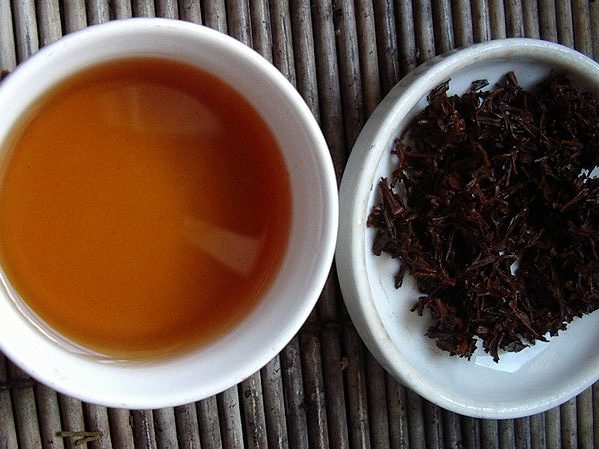
It goes well with almost any additives - mint, lemon, lime, milk, cream, sugar, honey, fruits, berries.But there are varieties that are simply a pity to supplement with something. Almost all types of black tea are blends. This is done to achieve the best results in terms of strength, taste and aroma.
Black tea contains more caffeine than coffee and has a strong energizing effect.
Best Black Tea (producers)
Twinings Ceylon orange pekoe
Expensive black tea of excellent quality from one of the oldest English producers. The Twinings company has been producing tea since 1706 and knows a lot about it. Since 1837 it has been a supplier to the royal court. It is worth trying it even in order to have something to compare with. Infusion of medium strength, rich color, very dense, full flavor and aroma.
The average price of Twinings Ceylon orange pekoe is 900 rubles per 100 gr.

Greenfield Kenyan Sunrise
Not very expensive tea of good quality Russian production. Has a rich infusion color. The aroma is not very strong, but this is more than offset by the rich tart taste.
The average price of Greenfield Kenyan Sunrise is 88 rubles per 100 grams.
Azercay sheet
Excellent tea from Azerbaijan. A combination of strength, taste and aroma for very little money. There are fruity notes in the taste. The aroma is honey-floral.
Average price of Azercay sheet is 91 rubles per 100 gr.

Of all types of black tea, I would especially like to highlight two varieties of Chinese tea, they are Keemun and Lapsang Souchong.
Gutenberg Keemun OR red with gold tips
Tea from the Chinese province of Anhui. The infusion of brewed tea has a rich red color, rich taste and aroma, and a pleasant aftertaste.
The average price of Gutenberg Keemun OR red with gold tips is 391 rubles per 75 gr.
Keemun has a deep, dark reddish color when brewed. The drink is very aromatic with a rich taste and aftertaste.
Dilmah t-Series Lapsang souchong
Dilmah is a brand from Sri Lanka, founded in 1988. Today it is the sixth largest tea brand in the world. The tea of this brand is affordable, with Lapsang souchong being a rare exception.
The average price of Dilmah t-Series Lapsang souchong is 1290 rubles per 100 gr.
Lapsang Souchong is prepared in a special way. When dried, tea raw materials are fumigated with smoke from burning pine needles, which gives the finished tea a tart pine-smoky aroma and a slightly tarry aftertaste.
The benefits of black tea are no less than green ones. It boosts immunity, invigorates, contains many beneficial trace elements, is a good antioxidant, but all of its beneficial properties remain for several hours after brewing. That is why it is recommended to drink a freshly brewed drink.
Oolong
Semi-fermented tea. For its production, juicy mature leaves collected from mature trees are used. After withering, the leaves are rolled and sent to fermentation. The fermentation process takes 2-3 days. During this period, every hour the leaves are stirred and kneaded, trying not to break. This is done so that not the entire leaf is fermented, but only its edges. After reaching a degree of fermentation within 50 percent, it is stopped by heating and drying.

Oolongs are produced only in whole leaf. Thanks to this technology, oolong tea has the properties of green and black tea at the same time. Oolong tea is brewed like black tea, at the rate of 1 teaspoon of tea for 1 cup + 1 teaspoon of tea for the teapot, but at a lower water temperature, about 90 ° C. Oolongs can withstand repeated brewing, according to some sources from 7 to 15 times. When brewing, the leaf opens and has a characteristic appearance - the edges of the leaf are dark, and the middle is green. It is this feature that makes it difficult to counterfeit this tea. Infusion, depending on the degree of fermentation, can be from amber to deep red.
Oolong tea is the most aromatic tea. Its aroma contains herbal and fruity notes and floral aromas. The taste is full, rich, slightly herbal with a sweetish aftertaste and aftertaste typical for black teas.
Oolong tea has a higher caffeine content than green tea.
Best Oolong
Confucius Milk Oolong
A very popular oolong variety in Russia. Differs in notes in taste, reminiscent of green tea with milk. The infusion is dense, not bitter, yellow in color.
The average price of Confucius Milk oolong is 180 rubles for 65 grams.
Tien-Ren Tie Guan Yin Oolong Leaf
A weakly fermented Chinese oolong tea with a sweet taste and a long pleasant aftertaste.
The average price of Tien-Ren Tie Guan Yin Oolong leaf is 293 rubles per 100 gr.

Plum Snow Da Hong Pao
Highly fermented Chinese oolong, containing a huge amount of vitamins and minerals. The color of the infusion is brown with chocolate notes on the palate.
The average price of Plum Snow Da Hong Pao is 212 rubles per 100 grams.
Puer
This type of tea can be very expensive depending on the aging period. This is a post-fermented tea. The collected tea leaves, brought to the level of green tea, undergo microbial fermentation under the influence of Aspergillus acidus molds.
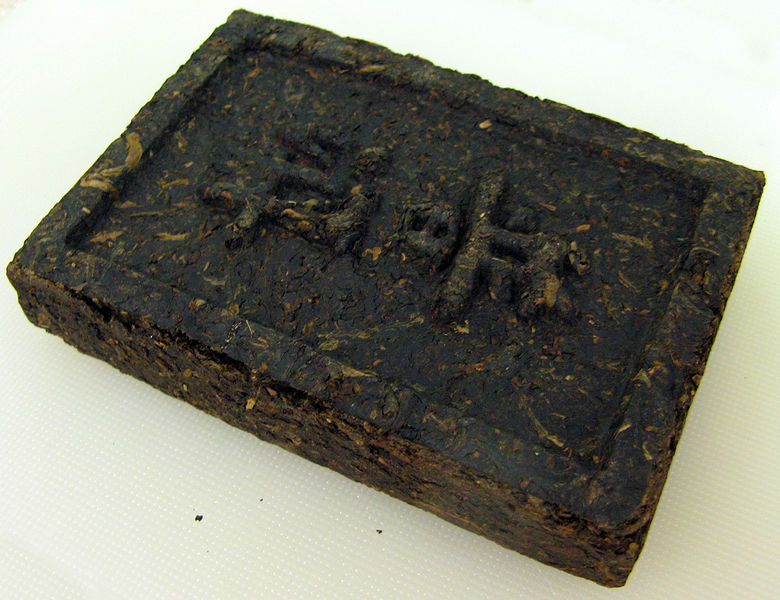
When natural aging is carried out, fermentation in this tea continues constantly and results in Shen Puer tea.
Sheng pu-erh tea acquires its special qualities after 2-3 years, and according to experts, it becomes especially valuable after 10-20 years, provided it is stored correctly. Sheng pu-erhs aged 40 and over are collectible and rarely found on sale.
When accelerated (artificial) aging is carried out, the Shu Puer variety is obtained. The accelerated aging technology was developed relatively recently, in 1973, but no additional chemistry is used, it is just that favorable conditions are created for the fungus in which the fermentation process is accelerated. Despite the fact that fermentation occurs in this tea constantly, its properties and quality do not change significantly over time.
Pu-erh tea goes on sale mainly pressed, but recently there is shu pu-erh loose.
For brewing, you need to take 4-6 grams of pu-erh tea per 100-150 milliliters of water. If you use pressed pu-erh, then before brewing it is recommended to pour over it with boiling water in order to wash off the dust and grind it. Pu-erh is brewed with boiling water and infused for several seconds. It can be re-brewed up to 10 times, each time increasing the infusion time by a few seconds.
There is another way of making pu-erh. The tea is infused for several minutes and repeated brewing is possible no more than 1-2 times. This gives the infusion a richer color, taste and aroma. The color of the infusion can be from deep red to almost black. The taste contains nutty and woody notes, as well as a caramel flavor. The aftertaste is pleasant with a slight bitterness. The taste largely depends on the quality of the raw materials taken for production. It is not recommended to add sugar, it spoils the taste of the puer Due to its strong invigorating effect, tea is recommended to be consumed in the morning.
Best Puerh (producers)
Sheng Puer Tocha 100 g "Jia-Ji" (Fab. Xiaguan, 2017)
Puerh from Yunnan province. Infusion with a mild taste and a floral-fruity aroma. The aftertaste is long-lasting, sweetish.
The average price of Shen Puer tocha 100 g "Jia-Ji" (Fab. Xiaguan, 2017) is 529 rubles / 1 tocha.
Shu Puer Chen Tai, Menhai Liantai factory, 2013, tocha, 100 gr.
Infusion of Shu Puer Chen Tai, dark ruby color. The aroma contains chocolate and fruity notes. Taste and aftertaste with a pleasant bitterness.
Average price of Shu Puer Chen Tai, Menhai Liantai factory, 2013, tocha, 100 gr. - 305 rubles / 1 point.
White tea
One of the most expensive types of tea. For its production, take the uppermost, barely blossoming leaves or leaf bud (tipsu), pubescent with white silvery hair (baichoy). That is why tea is called white. Harvesting is done early in the morning in good sunny weather. The collected leaves are not curled, subjected to minimal fermentation in the sun and dried in an oven.

White tea is brewed at the rate of 1 teaspoon per 1 cup with hot water at a temperature of about 80 ° C and infused for 4-6 minutes. White tea infusion is yellow-green, slightly darker than green tea. The aroma is very subtle. Floral notes are present. The taste is sweet with a slight bitterness, leaves a pleasant sweetish aftertaste.
It is not recommended to add sugar, honey, milk or anything else to white tea.
You can add water to the teapot several times as you drink in a short amount of time. With each subsequent brewing, it is necessary to increase the infusion time. When brewed again, the bitterness practically disappears. Repeated brewing can be continued until the taste of the drink is completely lost, on average no more than 2-3 times.
There is a lot of talk about the benefits of white tea, as it carries the power of an awakening kidney. It is also called "the elixir of immortality."
Top White Tea Makers
Twinings Pure white tea bags
Elite tea bags? And the price is not too different from the price of black tea. It remains only to rely on the name of the manufacturer.
The average price of Twinings Pure white in bags is 243 rubles for 20 bags (30 gr.).
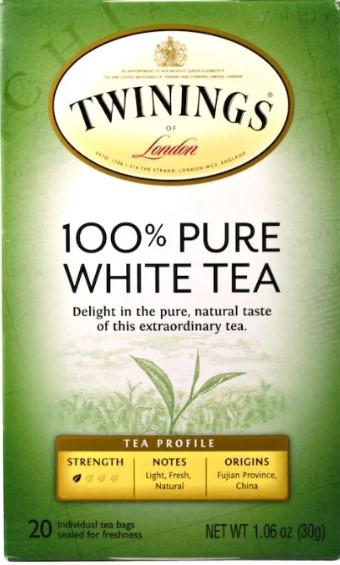
Dilmah t-Series Ceylon silver tips
It looks more like the truth, especially since Dilmah products, despite their excellent quality, are in a lower price category than Twinings products. Expensive!!! But it's up to you.
The average price of Dilmah t-Series Ceylon silver tips white tea is 2990 rubles per 40 gr.
Yellow tea
Yellow tea is made only in China. Its main feature is that only unblown buds are taken for its manufacture. Raw materials are harvested only in good weather, when there is no dew and excess moisture. Only healthy dense kidneys are ripped off.

The collected buds languish in parchment, cloth bags or heaps for about three days. The simmering process is carefully controlled, as it is the basis for the future taste of tea. The tea is then dried and ready to drink.
Yellow tea is brewed at the rate of 3 grams per 150 milliliters of water. Brewing water should be in the range of 65-85 ° C, boiling water will kill the taste of yellow tea. The infusion is yellowish-amber in color, transparent with a slightly sweetish taste. The aroma contains smoky notes inherent only in this type of tea.
For a long time, the use of yellow tea was the privilege of the emperor and high nobility, the secret of its production was carefully hidden from foreigners and the disclosure of the secret of yellow tea was severely punished.
Benefits of yellow tea: The unopened kidney is rich in trace elements, amino acids, vitamins and essential oils, which is why it is a good immunostimulating agent.
The most popular is Di Maestri Deluxe Yellow Tea Yellow Buds from Huo Shan Mountain, its average price is 890 rubles per 50 gr.
A few words about the dangers of tea
A lot of all kinds of research is being done on the benefits of this drink, no less of them are going through in order to find the harm done. We will not dig deep, we will try to consider only the obvious facts.

- Tea should not be consumed in large quantities by children and pregnant women, as it contains caffeine, which stimulates the central nervous system. It should also not be used by people who are allergic to the substances contained in the raw materials.
- The tea leaf very well absorbs not only extraneous odors, but also any other substances, therefore, so that the product does not become harmful, it must be stored in sealed containers away from chemicals, poisons and simply unpleasant smelling substances.
- Tea and in the process of growth absorbs everything useful and harmful around, therefore, the ecological purity of the place of its growth is very important.
- Tea made in violation of technology (contaminated with foreign microorganisms, fungi, overdried) can be dangerous. And not always a high price is a guarantee of high quality. Renowned manufacturers cherish their reputation. But no risk - no pleasure! After all, you can find a real treasure of tea art from a completely unknown manufacturer (it's like buying a painting from a street artist).
- Well, the most obvious harm from drinking tea is that it really affects the color of tooth enamel. This is due to the tannins contained in the drink.
By the way - the effect of tea on skin color has not been proven !!!
Pick your tea and enjoy. Enjoy drinking tea!




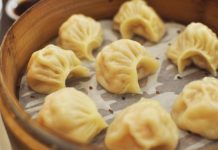
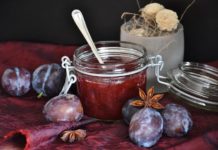







The first time I heard about yellow tea, I will have to try. Usually I take green, it tones up and removes toxins. Better, of course, leaf, brew, but when there is no time, then it will do in bags)))